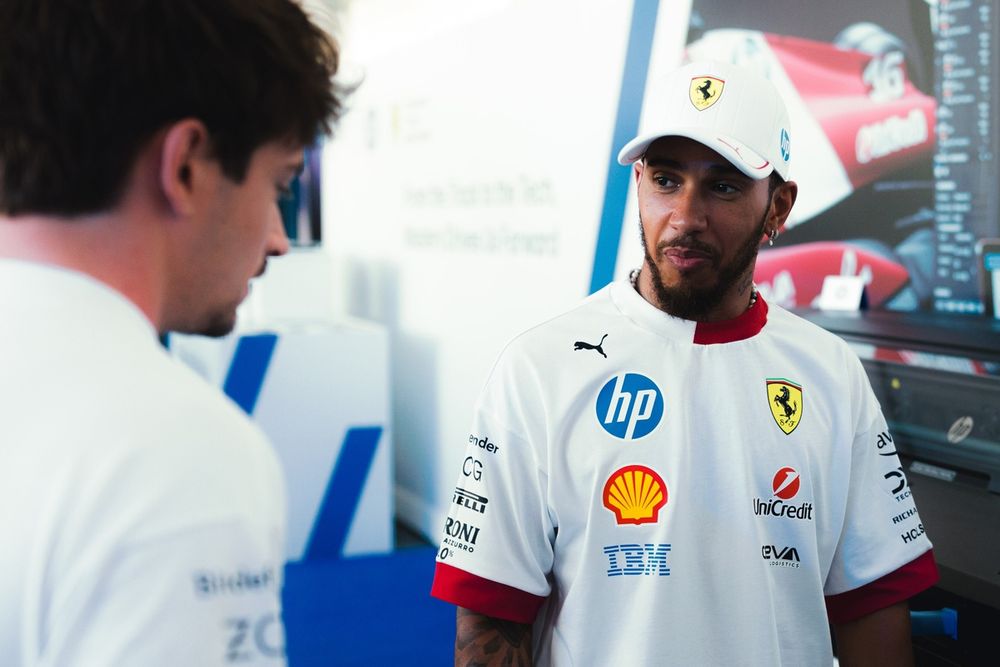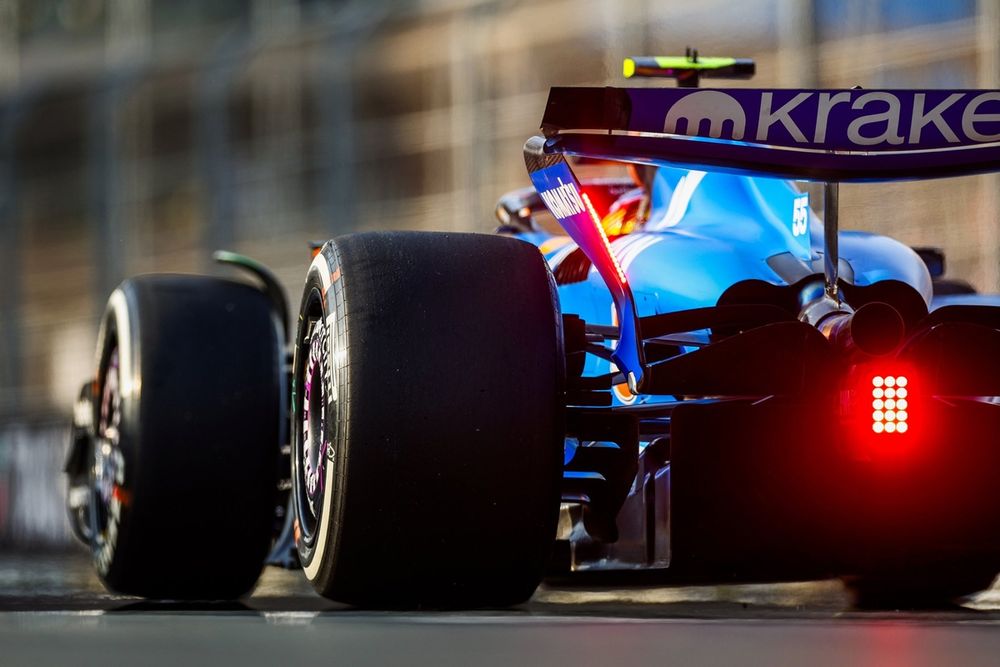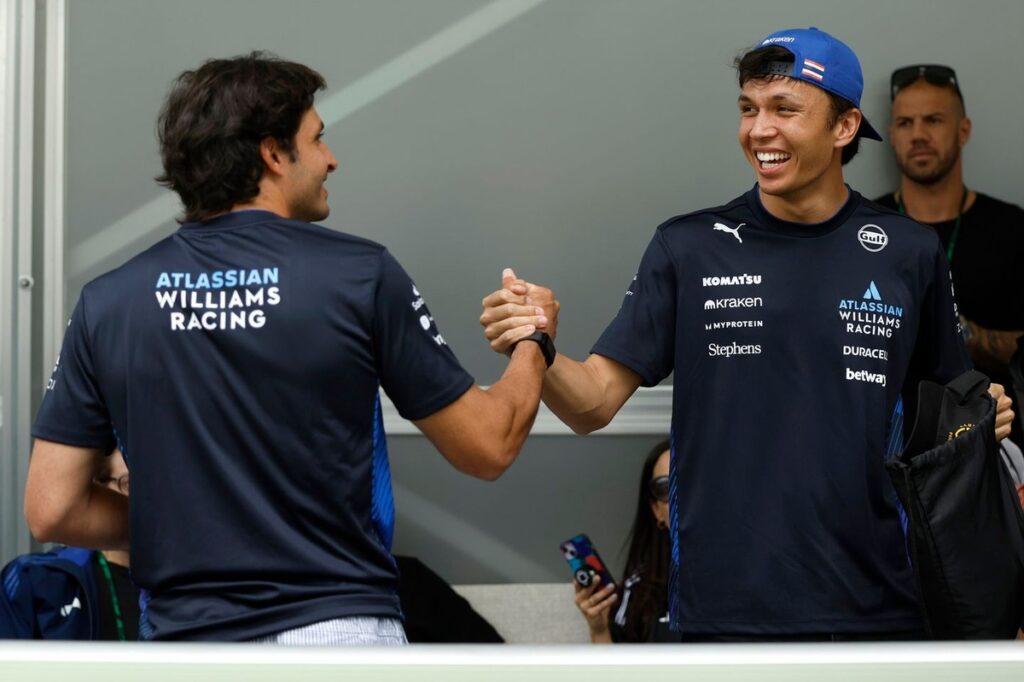When Carlos Sainz announced his move to Williams for 2025, Autosport described the pairing of him with Alex Albon as Formula 1’s most intriguing match up. And so it has proved, albeit not in a way that has always cast Sainz in a flattering light.
His first two race weekends for Williams were anything but smooth operations: Albon outqualified him to the tune of nearly three tenths (four grid positions in today’s money) in Australia, then he spun out of the race caught out by an operational quirk of the car while running in Safety Car mode.
In China, he didn’t follow Albon through to the final phase of qualifying, either for the sprint or for the grand prix itself.
This fed a narrative that ‘habits’ Sainz had developed while driving for Ferrari were holding him back, and that adapting to the Williams car was proving more difficult than expected.
Sainz’s response was to point out that not only were these issues expected, anyone expressing surprise at the duration of the process didn’t know as much about F1 as they think they do.
With the increasing maturity of F1’s ground-effect rule set has come a renewed emphasis on qualifying performance; increased wake turbulence has made overtaking more difficult and more resilient tyres have narrowed the strategic options, leading to many races shaking out along the lines of grid order.
In tandem with the diminishing performance gap between cars, this has made small margins in qualifying all the more damaging.
Carlos Sainz, Williams, Alexander Albon, Williams
Photo by: Zak Mauger / Motorsport Images
Plus, as Williams team boss James Vowles pointed out in Bahrain, Albon – who turned 29 in March – has been following a linear progression of improvement and continues to do so.
“You saw a step from him every single year,” said Vowles, “and this year he’s really not putting a foot wrong. I can’t fault anything that he’s doing.
“It’s absolutely on the money in terms of delivering. He knew he had to step up with Carlos in the car and he has.”
Sainz was closer in Japan and made it to Q3 in Bahrain, outqualifying Albon in the process.
Last time out, in Saudi Arabia, he outqualified his team-mate once again but Albon’s failure to reach Q3 was strongly influenced by a run plan which put him on track at a point where he wasn’t going to get the necessary ‘tow’ from another car.
In the race, Sainz played the team game exquisitely during the final phase, towing Albon to keep him out of DRS range of the pursuing Isack Hadjar in a Racing Bulls car which was faster than the Williams.
Sainz put this uptick in performance down to working through experimental approaches.
“Every weekend I’m still trying something different with set-up,” he said ahead of this weekend’s Miami Grand Prix. “And the last couple of weekends I seem to just try something that worked.

Carlos Sainz, Williams
Photo by: Andy Hone / Motorsport Images
“If I keep applying this philosophy, for sure at one point I will try something that doesn’t work and I’ll need to revert.
“So I need more examples of that, and probably maybe what worked in Jeddah might not work in Miami, and I need to learn that and have that experience.
“And then with driving, for sure I think there’s conditions that I haven’t been with this car yet, and tarmacs and kerb usages and bumps that I haven’t experienced yet with this car, that we’ll have to learn. Whether that comes at a bad time or a good time is a different thing.
“But yeah, for sure it’s going to be things like that.”
Those who have worked with Sainz speak of his meticulous and cerebral approach: his capacity to approach a problem by breaking it down dispassionately in his mind, understanding all the influencing factors, and prioritising the most relevant.
He knows when to be patient and when to be impatient (you will have heard the latter when he was chivvying the Ferrari pitwall over the team radio).
He has said this weekend that Lewis Hamilton’s struggles at Ferrari have come as no surprise to him. Like Hamilton, Sainz prizes rear-end stability in a car and finds its absence discombobulating.

Lewis Hamilton, Ferrari, Charles Leclerc, Ferrari
Photo by: Ferrari
This was writ large during the past two seasons at Ferrari, where the Scuderia was labouring to add performance to its car in a way both its drivers could access.
Charles Leclerc can live with a skittish rear axle provided the front changes direction as quickly as he’d like; when Ferrari made the SF-23 and SF-24 edgier, Leclerc had the beating of Sainz.
Last season, when Ferrari introduced a new floor and front wing package over the Monza and Singapore weekends with a view to making the SF-24 more benign to its rear tyres in race trim, the balance swung back Sainz’s way.
It appears this experience is now helping Williams since Sainz has highlighted a performance-limiting trait of its cars that Albon has simply learned to live with.
In the opening rounds of the season that manifested itself in Albon putting clear air between himself and Sainz in qualifying.
During the Saudi Arabian GP weekend, Sainz explained the FW47 has a balance issue which “appears a bit more in medium-to-low-speed corners”. While he had been trying to adapt his style to it, and mitigate it with set-up, he said greater performance could be unlocked by erasing it entirely.
“As a team I think it’s fundamental that we improve this,” he said, “because this might be the thing that is holding Williams back in the last few years.

Carlos Sainz, Williams
Photo by: Peter Fox / Getty Images
“And we need to understand it together, to try and move forward with this car – and try to apply it to the next set of regulations.”
With the benefit of a short break after the first triple-header of the year, Sainz has been able to digest the opening run of five grands prix.
It’s understood that Williams plans to be among the earliest of the midfield teams to pivot towards 2026 development, which means to a great extent he is going to have to play the remainder of 2025 with the deck he has in hand.
“My philosophy is always you can learn from bad weekends,” he said in Miami. “They teach you a lot of lessons, but also the good weekends.
“I think you need to understand what you did well to try and replicate. And having had a couple of good weekends after a couple of bad ones, you need to learn probably how you apply the good things and keep the good things – and make sure you keep working on the bad things.
“And I feel like this week [between races] has helped us to understand that. Just had a bit of a catch-up also with my engineers.
“I’ve told them, and I think I’ve said it many times, that we still have a few bumps along the way in the adaptation process because it’s still…you need to discover a few things.
“Five races is not enough to discover your strengths and weaknesses or things that may catch you by surprise. But I think we’re trending in the right direction and that’s the important thing.”
In this article
Stuart Codling
Formula 1
Carlos Sainz
Alex Albon
Williams
Be the first to know and subscribe for real-time news email updates on these topics
Subscribe to news alerts
Read the full article here

